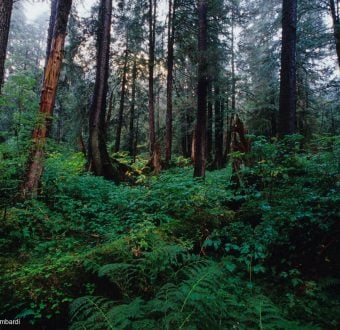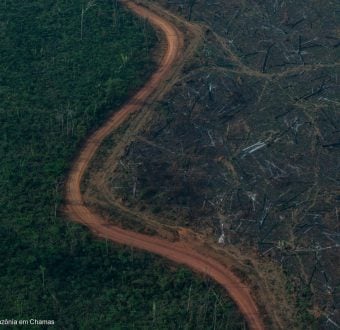This morning, I woke up in the Sawré Muybu village with a strong sense of anticipation. Today, we start a series of collaborations with the Munduruku Indigenous People to defend their ancestral territories and protect the heart of the Amazon — the Tapajós River basin.
From the structure that we set up in the forest at the village of the Munduruku, I can see the coming day framed by the traditional roof. I can hear the nearby river and the wind shaking the leaves of the trees.
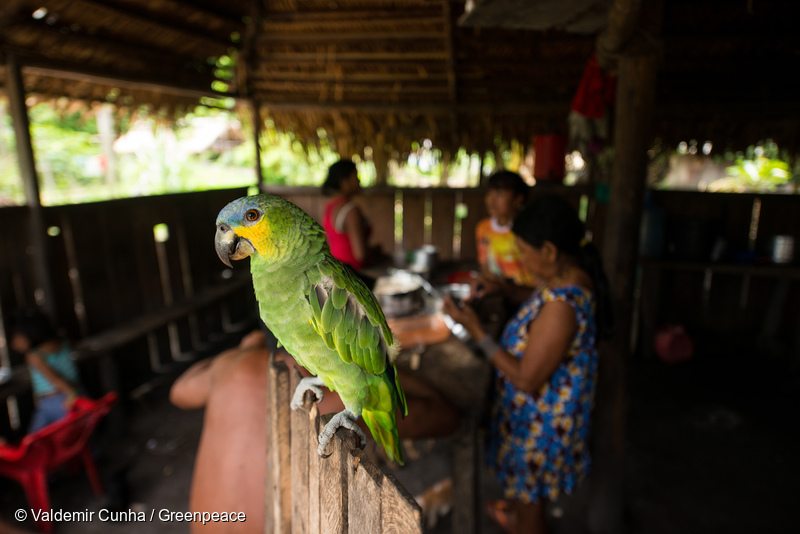
A blue-fronted amazon (Amazona aestiva) inside the house of Juarez Saw Munduruku, Cacique (chief) of village Sawré Muybu Indigenous Land.
Over the last few weeks, I’ve been working with the Munduruku to prepare for the arrival of activists, Indigenous leaders, and community members to draw the world’s attention to the Tapajós River and the people who live there. The Munduruku have bravely resisted the Brazilian government’s plans to build dams on the Tapajós River for years — most recently the São Luiz do Tapajós mega-dam.
And I am glad to stand with them now to keep the Tapajós River free.
Today, the Munduruku publicly identify their territory to demonstrate to Brazilian society and the international community the risk the dam poses to the Amazon forest and their way of life.
Working with Greenpeace activists, they are undertaking a community led, unofficial demarcation of their traditional land — which means putting 50 big signs around the perimeter of their territory. The signs look similar to the official signs the Brazilian government would use if they were doing what their very own departments recommend: recognizing this area as Munduruku traditional land.
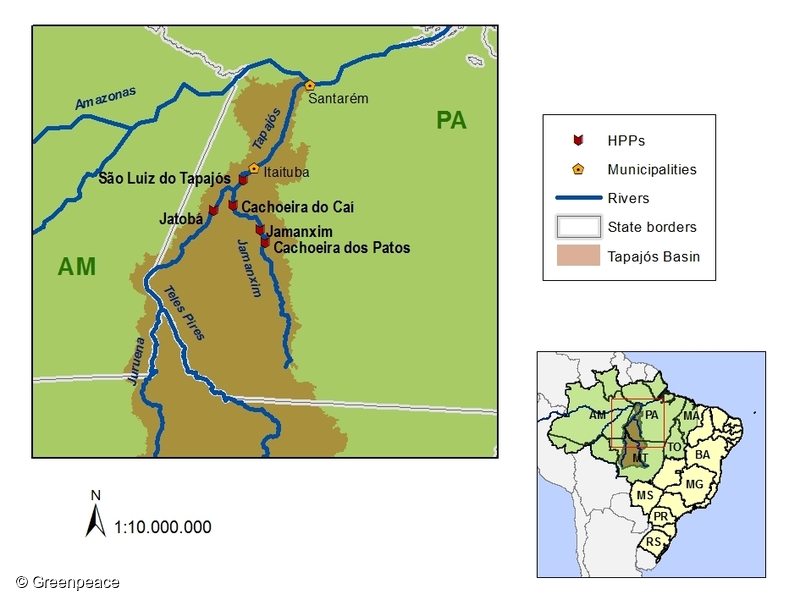
The Tapajós River Basin in Brazil. Map by Greenpeace.
The demarcation is another step in the global effort to stop the construction of the São Luiz do Tapajós hydroelectric dam. If built, the mega-dam would flood nearly 400 square kilometers of forest, including important cultural and traditional sites of the Munduruku people and other traditional populations in the area.
Currently, the licensing process for the dam has been suspended due to Indigenous land claims, but the Tapajós won’t be safe until the dam is cancelled for good.
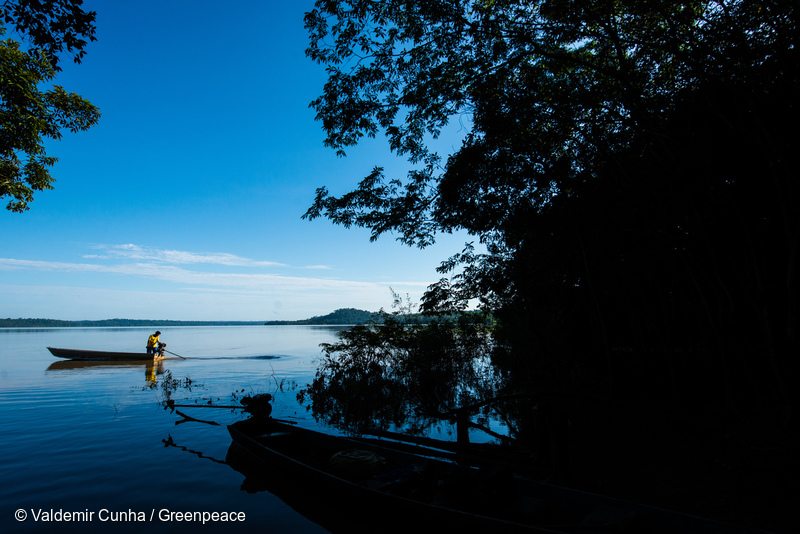
So today, we will walk around the perimeter of the Munduruku territory or go by boat along the Tapajos river, spreading signs that show another way is possible. Together, we will seek the support of all those who believe in a more just world — one where the Amazon and its Indigenous Peoples have their rights respected and placed above commercial interests.
Please join us: stand with the Munduruku to protect the heart of the Amazon.


